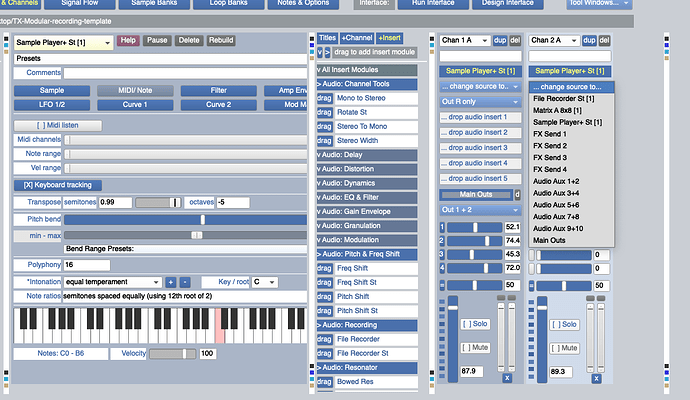Hi all, just wanted to announce a new release of the TX Modular System, which is open source audio-visual software for modular synthesis and video generation, built with SuperCollider and openFrameworks (https://openFrameworks.cc).
This release includes various new modules, bug fixes and other small changes (such as Channels can now have their meters turned on or off individually), but the biggest addition is a new visual modular app:
TXV (which was built with openFrameworks) is a separate application which is controlled by and linked to the TX Modular system. It has it’s own modules for generating 2D and 3D visuals, importing images, movies, 3D models and text, adding modulation and various real-time FX - such as image blur, colour manipulation and masking. TXV modules can be edited, automated or modulated from within the TX Modular.
There are 6 new example files in the TX download, each with their own help file, that explain how to use TXV with TX Modular.
Release notes & download links: http://palemoonrising.co.uk
Platform notes:
This version has been tested on MacOS (0.10.11) and Windows (10). The audio engine should also work on Linux.
The visual engine, TXV, has only been built so far for MacOS and Windows - it is untested on Linux.
The current TXV MacOS build will only work with Mojave (10.14) or earlier (10.11, 10.12 & 10.13) - but not Catalina (10.15).
This software is still quite experimental and there may well still be bugs! TXV has only very recently been compiled for Windows (I mostly use Mac), and I’ve noticed that sometimes, TX Modular on Windows can be slow at starting up and occasionally crashes when opening large files. So please treat this as a work in progress.
Big thanks to all the developers.
Best,
Paul


